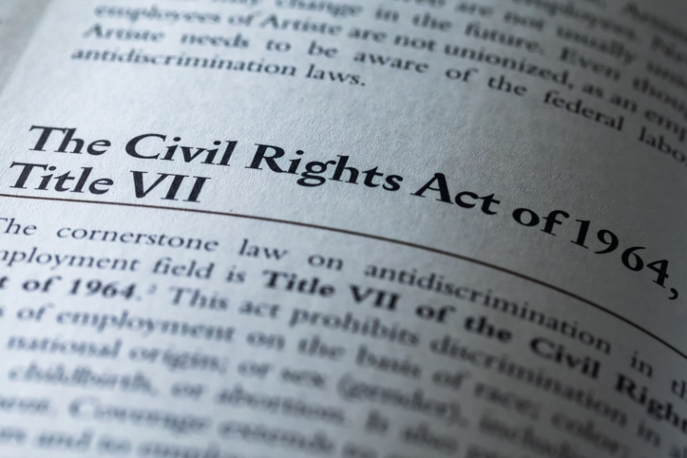Photo Credit: Wirestock
The American workforce has seen dramatic, transformative changes over the past century. Unions and grassroots organizers have been at the helm of worker’s rights initiatives and inspired change in legislation and across industries. Arguably the most significant of these achievements was the Civil Rights Act of 1964 which, among other things, prohibited employers from multiple forms of discrimination and retaliation against applicants and employees. In the past, we have written about how Martin Luther King Jr.’s leadership in the labor and civil rights movements led to the passage of the Civil Rights Act of 1964. We owe him and everyone who marched alongside him a huge “thank you” for the advocacy, resilience, and hard work to get this act passed. This week, we’re diving into how Title VII of the Civil Rights Act permanently changed the workforce for the better.
What It Changed
The Civil Rights Act of 1964 was a landmark piece of legislation for the protections it made for marginalized communities. Title VII prohibited employers from discriminating or retaliating against individuals based on their race, color, religion, sex, or national origin. This foundation not only created a new baseline employers were legally obligated to follow, it also paved the way for future efforts towards workplace fairness. For example, the Supreme Court used the Title VII provision about “discrimination on the basis of sex” to determine that it also included, “sexual harassment and hostile work environments, as well as discrimination based on sexual orientation, gender identity, and transgender status.” The act also created the Equal Employment Opportunity Commission (EEOC), an agency that still operates today.
What It Didn’t Cover
While Title VII was an important first step, there were still many areas of workplace discrimination that weren’t accounted for. In the decades following the 1964 legislation, additional anti-discrimination laws were passed, including:
–Age Discrimination in Employment Act (1967)
–Pregnancy Discrimination Act (1978)
–Americans with Disabilities Act (1990)
–Genetic Information Nondiscrimination Act (2008)
Discrimination and bias don’t just disappear overnight, and the ways in which they appear in workplaces and society evolved as the law changed. While employers were no longer able to explicitly state what types of employees could and could not work at their company, they were still able to put forth requirements that disproportionately impacted marginalized communities. As prejudiced practices continue to evolve, additional amendments to Title VII are essential to promote equal access, treatment, and respect for everyone in the workforce.
Where We Can Improve from Here
As our world gets increasingly complex, so does the implementation of anti-discrimination measures. HR Dive recently dug into some of the most prevailing issues on the horizon pertaining to anti-discrimination law. Notably, HR Dive highlighted the dispute about the right to religious freedom in the workplace and civil rights related to sexual orientation and gender identity. The religious freedom argument was also applied to vaccine status in the workplace. While the courts and legislators debate over what is and is not legally required of employers under these circumstances, we encourage employers to take an active part in the conversation and develop policy that respects the identity and autonomy of all parties.
Another area impacting anti-discriminatory law is the increasing integration of AI technologies in the workplace. ACLU racial justice program senior staff attorney, Olga Akselrod, said:
“While these tools may seem attractive to employers as a way to reduce the cost and time of resource-intensive processes such as hiring, many of these tools pose an enormous danger of amplifying existing discrimination in the workplace and labor markets and exacerbating harmful barriers to employment based on race and other characteristics.”
Earlier this year, we reflected on how artificial intelligence should not be behind policy writing due to concerns around inaccuracy, biased text, and potential promotion of harmful behaviors. In our blog, we noted that:
“Employers can still view the Equal Employment Opportunity Commission’s (EEOC’s) Assessing Adverse Impact in Software, Algorithms, and Artificial Intelligence Used in Employment Selection Procedures Under Title VII of the Civil Rights Act of 1964 through Wayback Machine for guidance.”
How we treat and protect our colleagues is a reflection of the world we want to live in. The advocates of the labor and civil rights movements worked tirelessly to have their voices heard. Thanks to them, we have an incredibly valuable foundation we can use to stand up for employees of every identity. As we look back on everyone who made Title VII of the Civil Rights Act of 1964 possible, we affirm our commitment to working with the corporate sector to ensure every employee is valued, respected, and protected.
RALIANCE is a trusted adviser for organizations committed to building cultures that are safe, equitable, and respectful. RALIANCE offers unparalleled expertise in serving survivors of sexual harassment, misconduct, and abuse which drives our mission to help organizations across sectors create inclusive environments for all. For more information, please visit www.RALIANCE.org.

